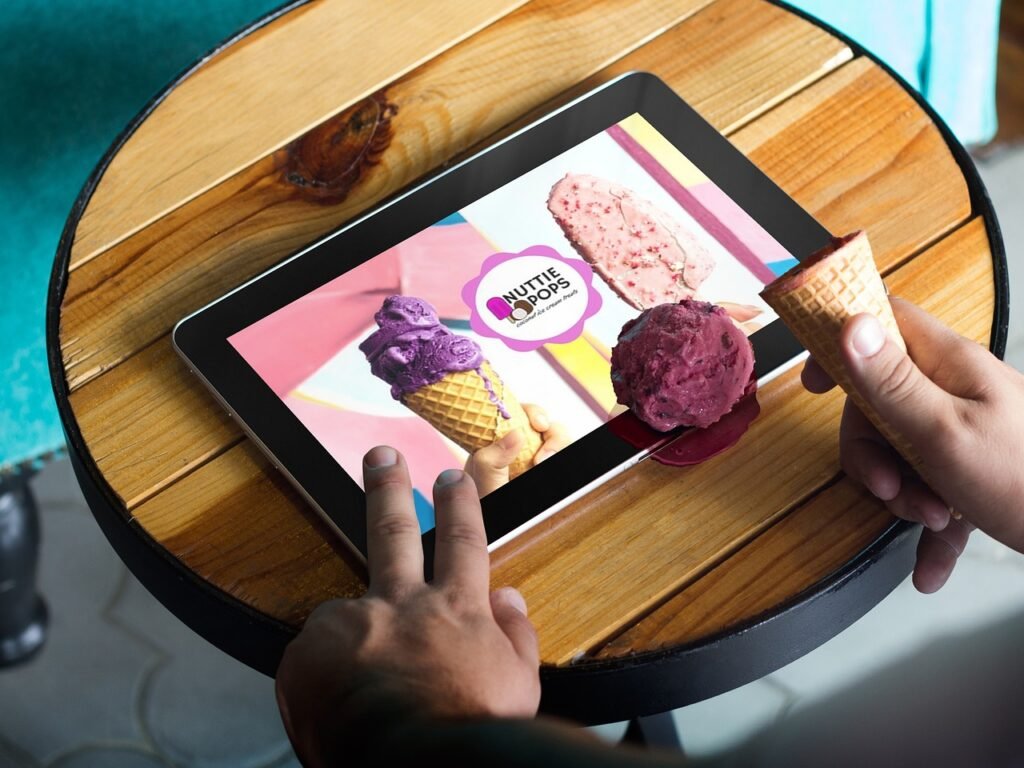This Article has been revised, edited and added to, by Poulomi Chakraborty.
- A New Era of Engagement: UGC vs. Traditional Advertising
- Harnessing UGC for Deeper Customer Connections
- Leveraging Technology to Amplify UGC Impact
- Crafting a Sustainable and Effective UGC Strategy
- Ensuring Ethical Practices in UGC Campaigns
- Conclusion: Embracing UGC as a Cornerstone of Digital Marketing
In the bustling world of digital marketing, one hero often unsung is user-generated content (UGC). This powerhouse of authenticity can transform how brands interact with their audiences, making marketing efforts not just seen but felt on a personal level. Let’s delve into why UGC holds such transformative potential and how it compares to traditional advertising strategies.
A New Era of Engagement: UGC vs. Traditional Advertising

In an age where consumers are bombarded with countless ads every day, traditional advertising strategies are finding it harder to capture attention. The average person is exposed to between 6,000 to 10,000 ads each day, and as these numbers swell, the effectiveness of conventional ads seems to dwindle.
This saturation leads to what’s known as ‘ad fatigue’, where viewers simply scroll past without engaging, much less remembering the ad later.
Enter user-generated content, a breath of fresh air in a crowded room. UGC is any form of content—text, videos, images, reviews, etc.—created by people rather than brands. This content is voluntarily produced by users who are often unpaid, making it an authentic and trustworthy source of information.
The key difference between UGC and traditional advertising lies in this authenticity and the unique form of engagement it offers.
Authenticity and Trust
Trust is a crucial currency in digital marketing. A study by Nielsen reported that 92% of consumers trust organic, user-generated content more than they trust traditional advertising. This is because UGC isn’t created to sell but to share real experiences.
For example, a customer photo of a meal at a restaurant can be more enticing than high-quality professional shots because it’s seen as more genuine.
Enhanced Engagement
UGC inherently invites interaction. When a user sees content from another consumer, they see a reflection of their own possible experience, not just a corporate agenda. This relatability increases the likelihood of engagement—likes, shares, comments, and even conversions.
The Content Marketing Institute found that conversion rates are six times higher when user-generated content is part of the path to purchase.
Cost-Effectiveness
While traditional advertising often comes with hefty price tags, UGC can be more cost-effective. Encouraging your audience to share their own experiences requires minimal investment compared to the costs of planning, producing, and placing traditional ads.
Additionally, UGC can continually generate value, bringing new views and engagements without additional expenditure.
Longevity and SEO Benefits
Traditional ads run for a set period, depending on the budget. Once the money runs out, the ad disappears. However, UGC remains online, adding to the brand’s digital presence continuously.
This persistent content not only keeps working in your favor but also contributes positively to search engine optimization (SEO). Search engines love fresh, relevant content, and UGC provides just that, often peppered with keywords that potential customers might use.
The Challenge of Control
One notable challenge with UGC is the lack of control. Traditional advertising allows brands to dictate exactly how their products are presented, but UGC is unpredictable. This can sometimes lead to negative exposure.
However, even negative UGC can be turned into an opportunity for brands to demonstrate excellent customer service by addressing complaints and showing responsiveness.
User-generated content is not just another trend; it’s a pivotal part of modern digital marketing strategies. Its power to build trust, enhance engagement, and offer cost-effective solutions makes it a formidable opponent to traditional advertising tactics.

In the fast-paced world of digital marketing, at Digital Web Solutions, we’ve recognized the gold mine that is User-Generated Content (UGC). This isn’t just another buzzword for us; it’s the heartbeat of authentic engagement. Being deeply embedded in an industry that thrives on innovation and connection, UGC offers us a mirror to see exactly what resonates with our audience.
Yes, many startups in our sector are harnessing UGC, but what sets us apart is how we blend it with cutting-edge AI to curate content that’s not only relevant but also deeply impactful.
Here’s a slice from our playbook: we incentivize our community through contests and featured spots on our digital platforms to share their experiences with our services.
But it doesn’t stop at collection; we use AI-driven analytics to measure the engagement levels of different types of UGC, enabling us to scale our content strategy intelligently and refine it continuously for peak performance.
The beauty of this approach is seeing firsthand how our users’ authentic narratives can amplify our brand’s voice and drive tangible results, turning our community into our most valuable marketers.
Vaibhav Kakkar, CEO of Digital Web Solutions
Harnessing UGC for Deeper Customer Connections
User-generated content isn’t just a tool for engagement; it’s a strategic asset that, when leveraged effectively, can deepen customer relationships and drive brand loyalty. Here’s how you can make the most of UGC to boost your digital marketing strategy.
Curating and Showcasing UGC
The first step in leveraging UGC is to gather and curate it effectively. Brands should encourage their audiences to share content by creating campaigns that inspire participation. For instance, hashtag campaigns on social media platforms like Instagram or Twitter can do wonders. Once you have a sizable amount of UGC, it’s crucial to showcase it smartly.
Highlight UGC on Your Platforms
Display selected user content prominently on your website, in your ads, and on your social media channels. This not only enhances your content’s authenticity but also makes the original creators feel valued, turning them into loyal brand advocates. Sephora’s “Beauty Insider” community is a great example; it features user reviews, photos, and discussions, which not only provides social proof but also keeps the community engaged.
Integrating UGC Into Product Development
User-generated content can also provide invaluable insights into product development. By analyzing the content your users produce, you can identify trends, preferences, and pain points that can inform future product lines or improvements.
Use UGC for Market Research
Analyze the feedback and suggestions that come through in UGC to guide your product development. This approach can be seen in action with brands like Lego, which uses ideas submitted by fans to create new products, showing that they value customer input, which in turn increases customer investment in the brand.
Enhancing Customer Service with UGC
UGC can be a goldmine for improving customer service. Negative reviews or issues highlighted by customers can be addressed publicly, which shows that the company is responsive and cares about its consumers.
Public Responses to Customer Feedback
Make it a practice to respond publicly to both positive and negative user-generated content. This transparency can significantly enhance your brand’s reliability and customer loyalty. Addressing concerns and thanking users for positive feedback keeps the communication loop open and positive.
Creating Brand Ambassadors
The most engaged users can be turned into brand ambassadors. These individuals can create high-quality content that resonates with your audience, offering a human face to your brand.
Rewarding Engagement
Offer incentives for the best user-generated content, such as featuring it prominently, providing discounts, or even offering free products. This not only encourages more UGC but also builds deeper connections with your most active users.
Legal Considerations
Before using UGC, it’s critical to understand the legal implications. Always ensure you have the right to use someone else’s content in your marketing. This might involve reaching out to the content creators for explicit permission or adding terms and conditions to your campaigns that outline content usage rights.
Continuously Monitor and Adapt
Finally, continuously monitor the performance of the UGC you utilize. See which types of content generate the most engagement, and adapt your strategies accordingly. This data-driven approach ensures that your UGC efforts are always optimized for the best results.
By integrating user-generated content into your digital marketing efforts, you can create a more authentic, engaging, and customer-focused brand presence. UGC not only enhances credibility but also fosters a strong community around your brand, driving both current customer satisfaction and attracting new prospects.

In the online retail and discount platform industry, User-Generated Content (UGC) holds a high level of importance, more so at DealA. We proactively harness UGC to build a reliable coupon repository and encourage a community-driven bargain-hunting experience.
For encouraging UGC, we’ve structured a reward system that not only incentivizes our users to share the deals they find but also reviews on product experiences or store services.
Scaling UGC isn’t a one-time feat; it’s a continuous process of community engagement. We actively invest in creating a seamless UX/UI to make it easier for users to share content on our platform.
Moreover, our team runs periodic checks vetting the shared coupons’ validity, which helps maintain our platform’s credibility. Tracking results is achieved through storing key performance indicators (KPIs) such as the number of shared coupons, the redeemed deals, and even feedback left by other users on shared content.
Systematic A/B testing help us optimize various elements like site design, reward scheme or the communication strategy, hence constantly improving the UGC contribution process.
Oleg Segal, Founder and CEO of DealA.com
Leveraging Technology to Amplify UGC Impact
In the digital age, technology plays a pivotal role in enhancing the effectiveness of user-generated content. Several platforms and tools can help you manage, curate, and amplify UGC to ensure it reaches its full potential in your marketing strategy.
Utilizing UGC Platforms
Several specialized platforms can help you collect, manage, and display UGC efficiently. These platforms often come with tools to automate the curation process, ensure legal compliance, and even analyze the impact of the content.
Popular UGC Platforms
- TINT: TINT helps brands aggregate, curate, and gain rights to user-generated content from social media. It also allows brands to display this content across various marketing channels, providing a seamless integration.
- Yotpo: Primarily used for e-commerce, Yotpo not only collects reviews, photos, and Q&A but also helps in making these elements shoppable, directly influencing sales.
- Tagboard: This tool uses hashtags to collect social media posts and display them in a customizable format. It’s great for live events or campaigns where real-time engagement is crucial.
Integrating UGC into Email Marketing
Email marketing remains one of the most effective digital marketing strategies. Integrating UGC into email campaigns can increase the relevance and personalization of the content, thereby boosting open rates and engagement.
How to Integrate UGC in Emails
Showcase customer reviews and testimonials prominently in your emails. For example, include a section in your newsletter that features a “fan photo of the week” or highlight customer stories and experiences that relate to your products or services.
Enhancing Website Experience with UGC
Your website can host a variety of user-generated content. From a dedicated review section to a community gallery, there are numerous ways to incorporate UGC that can enhance the user experience and provide social proof.
Strategies for Website Integration
Create a community hub on your site where customers can post and share their experiences. For instance, GoPro’s website features a “GoPro Gallery” where users upload their best photos and videos taken with the cameras. This not only showcases the product in action but also inspires other customers to share their content.
Leveraging UGC for Social Proof in Advertising
User-generated content can be extremely powerful in ads because it acts as built-in social proof, increasing the credibility of your brand and the effectiveness of your ads.
Using UGC in Ads
Include real customer testimonials and user-generated photos in your social media ads. These ads often perform better in terms of engagement and conversion rates because they are perceived as more trustworthy than traditional ads.
AI and Machine Learning in Managing UGC
Artificial intelligence and machine learning can be leveraged to automatically sort through large volumes of UGC, identifying the highest quality content or the most relevant pieces to feature.
AI Tools for UGC Management
Platforms like Cortex and Peltarion use AI to analyze images and text to understand trends and sentiment in user-generated content. This analysis can help you decide which content is most likely to resonate with your audience and align with your brand values.
Continuous Learning and Adaptation
Finally, the key to successfully integrating UGC into your digital marketing efforts is continuous learning and adaptation. Use analytics to track the performance of UGC across different platforms and make adjustments based on what works best for your audience and goals.
By embracing these technological tools and strategies, you can enhance the impact of user-generated content in your marketing mix, making your brand more relatable and trusted by your target audience.

Recently, we have been making better use of email marketing. This is something we have done for quite some time now, but with recent improvements in AI, it has proven to be much more impactful than ever before. Because of this, we have directed more of our focus here.
With AI, email marketing campaigns can be personalized to fit the tastes of any particular customer. This is perfect as it can more easily grab any individual’s attention and keep them interested in the content.
We had been personalizing emails for quite some time based on demographics, but by specifically identifying and targeting the interests of customers, this personalization becomes much more accurate and effective as a result.
We are constantly checking our analytics to determine our success, because this can guide us to change our approach.
By offering content tailored to individuals, we benefit because we retain our customers, and they benefit because they are provided with a service that is ideal for them.
Mathias Ahlgren, CEO and Founder of Website Rating

Related: Check out our free SEO suite

Crafting a Sustainable and Effective UGC Strategy
Developing a long-lasting and effective user-generated content (UGC) strategy requires thoughtful planning and continuous effort. Here are some key tips to ensure that your UGC strategy not only engages your audience but also contributes to your brand’s growth and sustainability.
Establish Clear Goals and Objectives
Before diving into UGC, it’s crucial to define what you aim to achieve with it. Whether it’s increasing brand awareness, improving customer engagement, driving sales, or boosting SEO, having clear goals will help you tailor your UGC strategy to meet these objectives effectively.
Example Goals
- Increase Brand Awareness: Utilize UGC to showcase real-life applications of your product.
- Enhance Customer Engagement: Create interactive UGC campaigns that encourage user participation.
- Drive Sales: Feature user reviews and testimonials prominently on product pages to influence purchasing decisions.
Create a UGC-Friendly Brand Culture
Encourage your audience to share their experiences by fostering a brand culture that celebrates and rewards user contributions. Make sharing easy and exciting.
Ways to Promote a UGC-Friendly Culture
- Regular Contests and Giveaways: Engage users by offering incentives for sharing content.
- Feature User Content Regularly: Make it a regular feature across your platforms to showcase and thank users for their contributions.
- Responsive Interaction: Always respond to user contributions, whether through likes, comments, or shares, to show that you value their input.
Educate Your Audience
Not all users may understand how to create content that can be effectively used by your brand. Providing guidelines and education on creating and sharing content can lead to higher quality UGC.
Education Tips
- Content Creation Tips: Share tips on how users can take better photos or videos of your products.
- Style Guides: Provide a style guide to help users understand your brand’s aesthetic, which can help align the UGC with your brand image.
Leverage Technology for Efficiency
Utilize tools and software that streamline the process of collecting, managing, and analyzing UGC. Automation can greatly reduce the manpower needed to manage large volumes of content and help maintain a steady stream of UGC.
Recommended Tools
- UGC Platforms: Tools like TINT and Yotpo can automate the collection and display of UGC, making it easier to manage.
- Social Listening Tools: Use tools like Hootsuite or BuzzSumo to monitor mentions of your brand and related content across social media.
Monitor and Measure Impact
To ensure the effectiveness of your UGC strategy, continuously monitor its performance and impact on your overall marketing goals. Use analytics to measure engagement, reach, and conversion rates associated with UGC.
Metrics to Track
- Engagement Rates: Track likes, shares, comments, and views to gauge how engaging your UGC is.
- Conversion Rates: Measure how often UGC leads to conversions compared to other types of content.
- Reach: Analyze how far your UGC is spreading and how many unique users it is reaching.
Adapt and Evolve
Digital marketing is a dynamic field, and what works today may not work tomorrow. Regularly review your UGC strategy and be ready to adapt it based on new trends, technologies, and audience preferences.
Adaptation Strategies
- Trend Analysis: Keep an eye on emerging trends in digital marketing and UGC to stay ahead.
- Feedback Loops: Use customer feedback to continuously improve and refine your UGC strategy.

In the world of finance and insurance, you might not think user stories matter much. But, they do. Big time. We started asking our clients to share their stories with us. It’s like gold – real, honest feedback that shows others were trustworthy.
We kick this off by sending a quick email after we’ve wrapped up their service. Just a simple, “Hey, mind sharing your experience?” kind of thing. Sometimes, we spice it up with a little competition – maybe a prize for the best story shared that month.
Scaling up, we got smarter. We automated those follow-up emails and used tools to spotlight these stories on social media. It’s about getting those real experiences out there without bogging down our team.
To see if it’s working, we watch how many people like, share, and talk about these posts. We’re also keeping an eye on our website traffic and conversions on the pages where these testimonials are posted.
Rhett Stubbendeck, CEO and Founder Leverage Planning
Ensuring Ethical Practices in UGC Campaigns
Seeking Explicit Permission
Always seek explicit permission from users before leveraging their content, especially if it’s for commercial purposes. This is not just ethical but also crucial from a legal standpoint.
Transparency with Incentivized UGC
If you’re offering incentives for UGC (like discounts, freebies, or contest entries), be transparent about it. Users should know if content was created under incentivized conditions, ensuring clarity and trust.
Avoiding Manipulation
UGC’s power lies in its authenticity. Brands must avoid the temptation to overly curate, edit, or manipulate UGC to fit a particular narrative. Let the genuine voice of the user shine through.
Conclusion: Embracing UGC as a Cornerstone of Digital Marketing
In today’s digital landscape, user-generated content (UGC) stands out as a cornerstone of effective marketing strategies, transforming passive audiences into active brand participants. By embedding UGC into your digital marketing efforts—from social media to email campaigns—you not only bolster authenticity but also foster a community that feels valued and heard. The power of UGC lies in its ability to create a genuine connection between brands and their customers, driving engagement and loyalty through relatability and trust.
To harness the full potential of UGC, it’s essential to set clear goals, encourage continuous audience participation, and leverage the right technology to manage and analyze content. As brands navigate the evolving digital space, adapting and refining UGC strategies based on analytical insights and consumer feedback will be key to maintaining relevance and impact. Ultimately, by prioritizing authenticity and user involvement, brands can craft compelling narratives that resonate deeply with their audiences, turning everyday consumers into vocal advocates and collaborators in the brand’s ongoing story.
Read Next
- Keyword Research for Startup Podcasts: Gaining Audio SEO Visibility
- Keyword Research for Startup Blog Posts: Crafting Compelling Content
- Keyword Research for Startup YouTube Channel: Video SEO Strategies
- Using Google Trends for Trending Keyword Opportunities
- Keyword Research Tools Comparison: Which One is Right for Startups?






















Comments are closed.